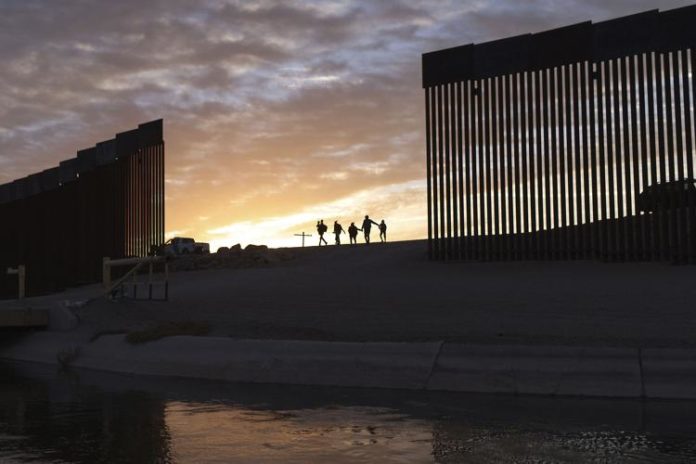
About 7,000 migrants are being stopped crossing the border daily from Mexico, the U.S. Border Patrol chief said Tuesday, a sharp increase from February that comes as the Biden administration nears a decision on whether to end sweeping asylum restrictions designed to prevent the spread of COVID-19.
Chief Raul Ortiz said 1,500 Cubans were stopped over the previous day, well more than double the daily average from February. He nodded when asked to confirm that about 7,000 migrants were being stopped, which compares with a daily average of about 5,900 in February.
The sharp increases, if sustained, may surpass levels of migration reached last year, in 2019 and other peak periods.
“This is a bipartisan issue, you have to get both sides of the parties together,” Ortiz said at Border Security Expo, an industry conference in San Antonio.
The Homeland Security Department says it is planning for three scenarios: current level of illegal border crossings, 12,000 and 18,000, an astounding number but one that officials said was simply to be prepared and not a projection.
The administration is particularly challenged by migrants from countries that have traditionally not sent such large numbers of people to the U.S., including Cuba, Nicaragua, Venezuela, and Colombia.
Since March 2020, the U.S. has used a public health order aimed at limiting the spread of COVID-19 to expel migrants more than 1.7 million times without a chance to seek asylum. The U.S. Centers for Disease Control and Prevention is expected to decide this week whether to extend Title 42, named for a 1944 public health law.
Some migrants from countries such as Cuba have continued to be released in the U.S. to pursue asylum because costs and diplomatic challenges prevent the U.S. from sending them home.
U.S. Immigration and Customs Enforcement has about 21,000 detention beds available, said Corey Price, director of the agency’s enforcement and removal operations. Even if it emptied its beds, they could be full this weekend with new arrivals. The agency is increasingly looking at home confinement and other alternatives, he said.
COVID-19 rates have been plunging among migrants crossing the border, raising more questions about the scientific grounds for Title 42. While there is no aggregate rate for migrants, test results from several major corridors for illegal border crossings suggest it is well below levels that have triggered concerns among U.S. officials.
In California, 54 of 2,877 migrants tested positive the first two weeks of March, according to the state Department of Social Services. That’s a rate of just 1.9%, down from a peak of 28.2% on January 8.
In Pima County, Arizona, which includes Tucson, the seven-day positivity rate among migrants didn’t exceed 1.3% in early March. The positivity rate among 5,300 migrants tested last month at the Regional Center for Border Health near Yuma, Arizona, was 0.1%.
McAllen, Texas, the largest city in the busiest corridor for illegal crossings, has a higher rate among migrants — 11.3% for the week ending March 16 — but it has been consistently lower than the general population.













